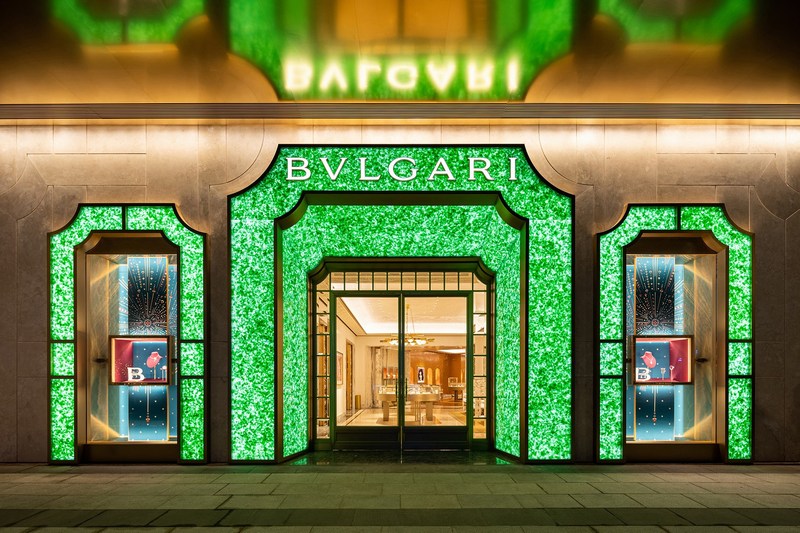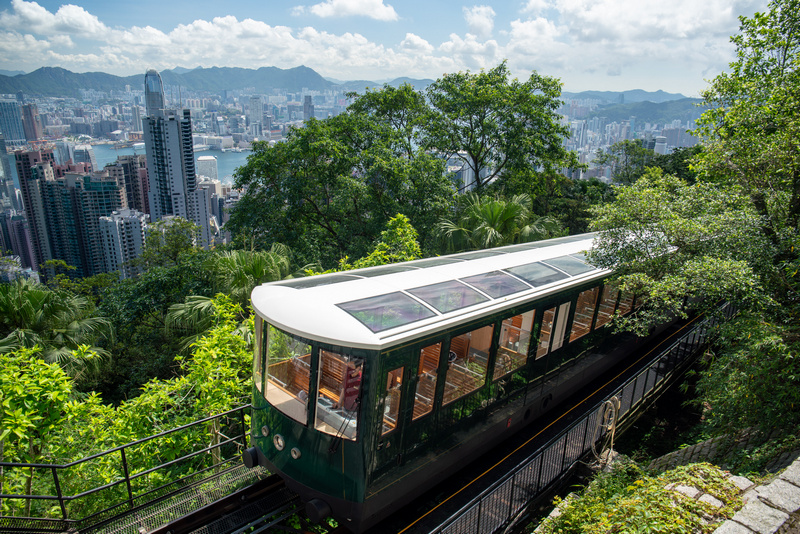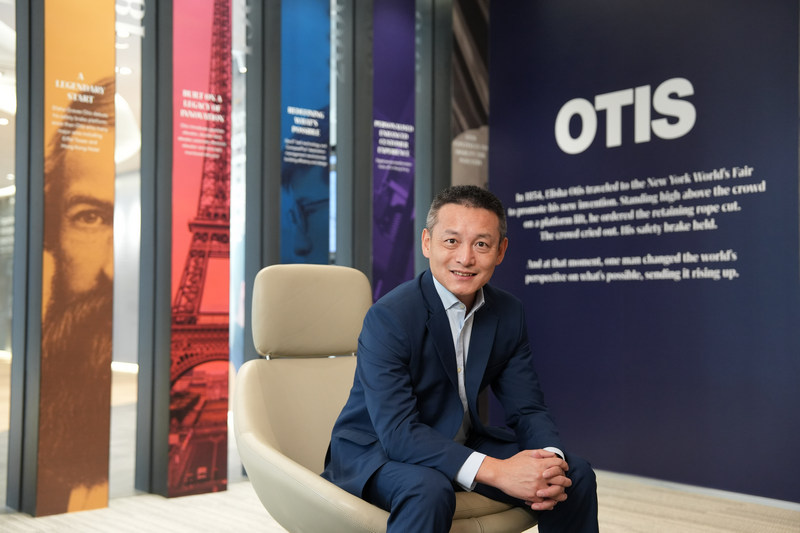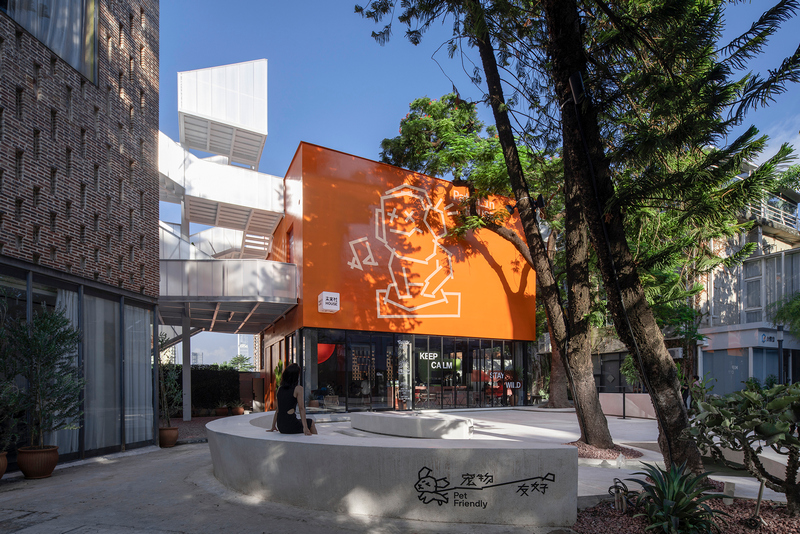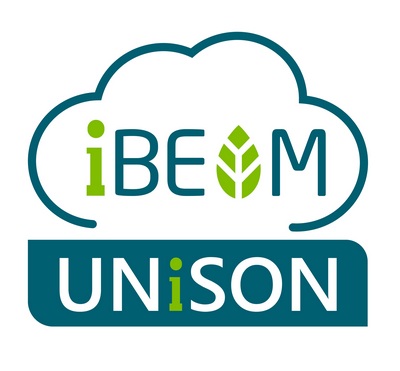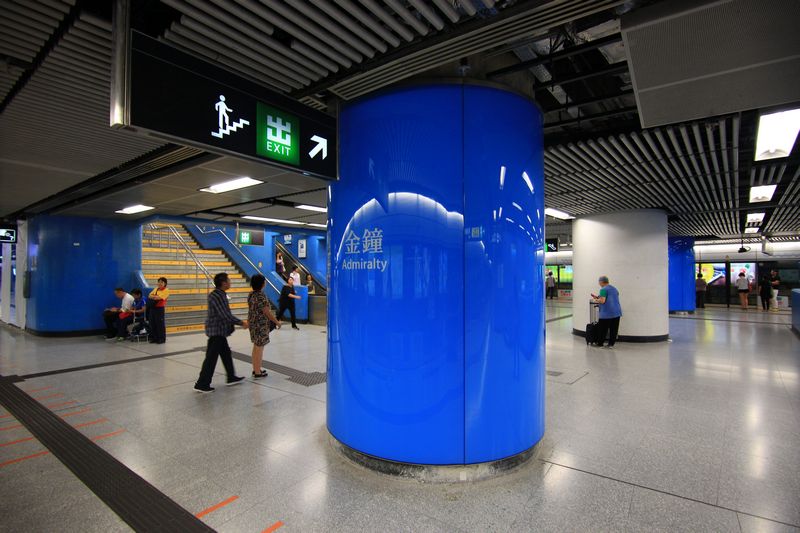The global challenges of global warming and extreme weather events are posing imminent threats and continuously endangering our world. Climate change has become a pressing issue that affects us all. As a pioneer in promoting green building and the certification body of BEAM Plus, the Hong Kong Green Building Council (HKGBC) is at the forefront connecting the government, the industry and the public to accelerate the green building movement in order to achieve carbon neutrality before 2050.
(按此瀏覽中文版)
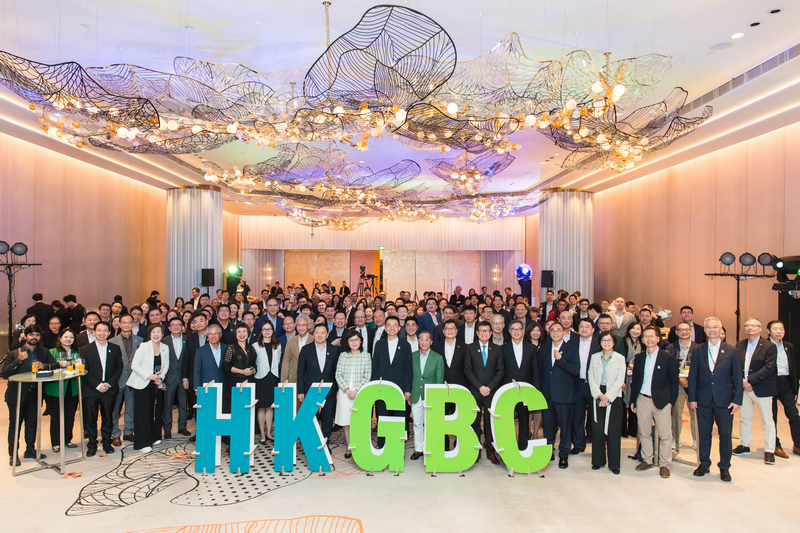
Marking 14 Years of Green Building Leadership: Reflecting on Success and Forging Partnerships
Celebrating its 14th anniversary in 2023, the HKGBC continues to raise green building awareness by engaging the government, the industry and the public, as well as developing practical solutions for the city. The recent Celebration Cocktail event was honoured with the presence of Ms Bernadette LINN, JP, Secretary for Development, The Government of the HKSAR, Mr Ricky LAU, JP, Permanent Secretary for Development (Works), The Government of the HKSAR, and other government representatives, as well as industry partners and members, reflecting the continuous support the HKGBC has received from the Government over the past 14 years.
Leading Industry’s Transformation Towards Carbon Neutrality
This year, in June, the HKGBC launched the “HKGBC Climate Change Framework For Built Environment”, providing a practical reference for the industry and building owners to embark on their net zero journey. As of November 2023, the number of downloads has already exceeded 10,000, of which nearly 50% is from overseas. The Framework is to assist the building industry in setting net zero carbon goals, reporting environmental, social and governance achievements, justifying green finance requirements, and disclosing climate risk strategies.
The Council has also introduced the “Zero-Carbon-Ready Building Certification Scheme” which enables benchmarking of energy performance, setting carbon neutrality targets, and justifying projects for green financing. In the first phase, 7 renowned developers and property management companies have received certification for a total of 29 projects, including Chinachem Group, Henderson Land Development Company Limited, Hongkong Land (Property Management) Limited, Hysan Development Company Limited, Nan Fung Group, Sino Land Company Limited and Swire Properties Limited, marking Hong Kong’s move towards a greener and more sustainable built environment.
Earlier in 2023, the Council launched Hong Kong’s first “HKGBC Retrofitting Guidebook”, which shares valuable case studies with the Asia Pacific region. Building related activities in Hong Kong account for around 90% of total electricity consumption and over 60% of total carbon emissions. In addition, existing buildings take up a very large proportion of local current building stock, offering massive potential for energy savings. Mainstreaming retrofitting is therefore one key focus of the HKGBC’s target in advancing net zero ambition. The Guidebook is a timely publication providing strategies for retrofitting with a view to optimise the performance of existing buildings. It presents various retrofitting options and considerations with case studies for the industry’s reference. Other resources such as available funds in the market are also demonstrated to help facilitate building owners performing retrofitting works in their buildings.
In December, the Council launched the “HKGBC Guidebook for Sustainable Built Environment” to provide green and sustainable design principles for all aspects of the built environment. The Guidebook provides comprehensive resources, including policies, directives and case studies, to help the industry set goals. The Guidebook provides clear guidance with 8 Key Themes and 48 Strategies for sustainable development.
Through these initiatives, the Council is transforming Hong Kong’s built environment and promoting sustainable practices and standards that extend beyond our borders, setting the foundation for the development of future cities.
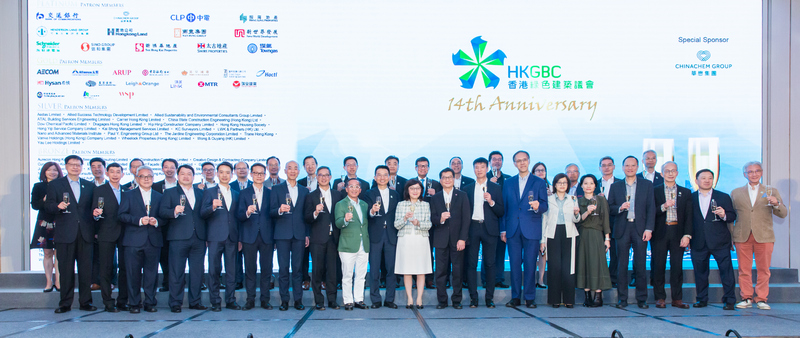
Expanding Reach and Enhancing BEAM Plus
As the certification body of BEAM Plus, the HKGBC will continue to provide impartial evaluation of the sustainable performance of buildings and strive to promote BEAM Plus to a wider audience. The Buildings Department has introduced the new Performance-based GFA Concession Policy, requiring building projects to achieve specific BEAM Plus ratings to be eligible for Gross Floor Area (GFA) concessions. In collaboration with the BEAM Society Limited (BSL), the HKGBC has developed a new Compliance Assessment procedure to facilitate the industry to obtain GFA concessions under the new regime.
In the past 12 months, the percentage of new building projects obtaining BEAM Plus Provisional Gold rating or above has risen to about 70%, compared to 40% in the initial years of BEAM Plus operation. This indicates a significant improvement in industry performance.
The Council will continue to revamp and introduce new rating tools, such as a rating tool tailor-made for food and beverage premises, and a revised version of the Existing Buildings rating tool to align with industry needs in ESG and green finance compliance. This year, the Council and BSL launched a new and upgraded version of the green building assessment tool for interior fit-out, renovation and refurbishment works – “BEAM Plus Interiors Version 2.0”, which provides clear and easy-to-understand rating criteria and extends coverage from commercial/institutional properties to residential properties.
Through co-operation with building owners in the Greater Bay Area, the application of BEAM Plus has been extended to the Mainland. In the coming year, it is expected that a generalised version of BEAM Plus would be developed to facilitate application of the standard in areas outside Hong Kong. With the continuous development of the rating system, the Council will be moving progressively to extend BEAM Plus to regions further afield, such as Europe and the Belt and Road countries.

The HKGBC launched the “HKGBC Climate Change Framework For Built Environment” in June 2023 to provide a practical reference for the industry and building owners to embark on their net-zero journey. 
The HKGBC launched the “Zero-Carbon-Ready Building Certification Scheme” in September 2023, which enables benchmarking of energy performance, setting carbon neutrality targets, and justifying projects for green financing. 
The HKGBC launched the “HKGBC Retrofitting Guidebook” in January 2023 to lead the industry in adopting the retrofitting solutions to existing buildings.
Recognition of Excellence
To recognise excellence in the sustainable built environment, the “Green Building Award (GBA)”, known as the Oscars of the industry, was first organised by the Professional Green Building Council (PGBC) in 2006 and has been co-organised with the HKGBC since 2010. This year was the ninth edition of GBA, themed “Embracing Wellbeing . Excellence in Sustainable Built Environment”, receiving overwhelming responses from the industry with a record-breaking number of 147 nominations, marking a 47% increase from the last edition. Among the 117 Finalists, 68 remarkable Award Winners were announced at the Award Presentation Dinner, which included 9 Pioneer Awards, 16 Grand Awards, 35 Merit Awards and 8 Special Citations on United Nations Sustainable Development Goals.
Collaboration and Synergy
Collaboration and synergy have played an instrumental role in the Council’s success. Over the years, the HKGBC has fostered different types of partnerships with renowned organisers, professional institutes, media organisations, such as ReThink HK, Hong Kong Trade Development Council, Build4Asia, Hong Kong Green Finance Association, MIPIM Asia Summit, the European Union, Hong Kong Metropolitan University, Hong Kong Economic Times, Hong Kong Economic Journal, and of course also with the Council’s Members and Founding Members, delivering many successful events and initiatives.
In particular, in 2023, the HKGBC, in close collaboration with its Patron Members, again co-organised the “Chinachem Group Sustainability Conference” and acted as the Strategic Partner of the “Schneider Electric Innovation Summit 2023”.
With the strong collaborations with the Construction Industry Council (CIC), the establishment of the “CIC Green Product Certification Scheme”, facilitates the industry’s adoption of green materials. As of November 2023, more than 1,000 products have been certified, and nearly 90% of them have received Platinum or Gold ratings. In addition, the 4th Hong Kong Green Shop Alliance (HKGSA) this year reached a new record high in terms of participating organisations and has become a platform for fostering the green shopping environment and practices.

The HKGBC co-organised the Chinachem Group Sustainability Conference 2023. 
The HKGBC acted as the Strategic Partner of the Schneider Electric Innovation Summit 2023. 
The HKGBC hosted enlightening session at the Eco Asia Conference.
Cultivating a Culture of Sustainable Living Amongst the Public
Cultivating a culture of sustainable living amongst the public remains one of the HKGBC’s core objectives. Through several signature initiatives, the HKGBC engaged with the community through various creative ways to promote green building.
Together with the Business Environment Council and BEAM Society Limited, the 3.5-year long “Jockey Club BEAM Plus in Schools Project” has successfully concluded which had provided comprehensive green building educational programmes in 125 schools, representing 11% of Hong Kong’s primary and secondary schools. The Council will target more than 200 schools in the second phase project in the next five years.
In order to raise public awareness and concern about green building, the HKGBC has organised the “My Green Space” Student Competition since 2011 to encourage students to use their creativity to integrate the concept of green building into real life and create ideal green spaces. Through the competition, the Council hopes to instil the knowledge of green building into the young generations, so that they can understand the importance and benefits of green building and become pioneers in promoting environmentally friendly buildings in future. Themed “Striving towards Carbon Neutrality – Net Zero Built Environment”, this year’s competition attracted more than 100 teams with 270 students participating.
This year marks the 11th anniversary of “Hong Kong Green Building Week (HKGBW)”. With the theme “Unite Green Building Powers, Fight for Carbon Neutrality by 2050”, the Kick-off Ceremony was hosted at the Atrium of Xiqu Centre in the West Kowloon Cultural District, an unprecedented location to utilise its open, naturally ventilated space and showcase the zero-carbon concept of the HKGBW. While the campaign featured a series of critically acclaimed public experience activities, including KOL Video Competition, Social Media Challenge, guided tours and online games, revolving around “Four Green Building Powers”, calling on all Hong Kong citizens to explore the local green buildings and experience their importance and benefits.
Nurturing & Passing On
Furthermore, the HKGBC’s efforts extend to nurturing young professionals through programmes such as the “Green Building Young Leaders (GBYLs)”, offering networking opportunities and mentorship. In the past 18 months, 12 elites have participated in the planning and execution of the parliamentary green building initiative. Through this process, they have broadened their vision and contributed to the sustainable development of society.
The HKGBC is committed to empowering stakeholders and the general public through knowledge sharing and training. The Council provides various training courses for industry practitioners to enhance their expertise in Retro-commissioning, Energy Assessor of Zero Carbon Ready Building and Green Product Certification. By offering regular training, practitioners can stay abreast of the latest developments and pass on this knowledge to a wider audience.
Membership Engagement Turning to Positive Impact
As a predominant organisation in the green building community, the HKGBC is committed to turning engagement into actual impact. Membership constitutes the cornerstone of the Council’s formation, and the Council appreciates the unwavering support of its members. Therefore, a wealth of valuable opportunities is offered for members to actively engage and participate. In October of this year, the Council organised a “HKGBC Delegation to Sydney”, where members had the opportunity to visit several renowned local 5 to 6-star green building projects. The purpose was to explore the excellent practices and latest technologies, with the aim of promoting the development of green building in Hong Kong.
The HKGBC reached a record high number of 185 Institutional members in 2023. The Council looks forward to further expanding its membership and creating a cross-sectoral impact to achieve the goal of decarbonisation.
Expanding Collaboration
On the international stage, the HKGBC is an active member of the World Green Building Council and its Advancing Net Zero programme. The Council is also part of the Green Building Industry Alliance in the Guangdong-Hong Kong-Macao Greater Bay Area and maintains close relationships with the Green Building Councils in the region.
Additionally, the Council is collaborating with institutions on retro-commissioning and retrofitting technology in the Greater Bay Area, leveraging the opportunities presented by the large number of existing buildings in the region.



The HKGBC co-organised the “Hong Kong Green Building Week 2023” with Construction Industry Council to promote the importance and benefits of green buildings to the public.
Looking Forward
Looking ahead, the HKGBC is eagerly anticipating Hong Kong’s participation in the World Sustainable Built Environment Conference 2024, one of the most important global conferences on sustainable built environment which the HKGBC has been participating in since 2011 and was the host in 2017 together with the CIC.
Furthermore, the Council will release the second edition of the “HKGBC Retrofitting Guidebook” with updated successful case studies as a living document for the industry. The Council will continue to work with the government to develop timely assessment tools and collaborate with assessment bodies and the finance sector to promote and facilitate industry compliance and reporting standards.
The Hong Kong Green Building Council has made significant progress in advancing sustainable practices within the built environment. In the face of the urgent global challenge of climate change, the HKGBC will continue to work together with all sectors to expand its positive influence beyond Hong Kong, strive to achieve the goal of carbon neutrality by 2050, and contribute to the global sustainable development.
To learn more about the HKGBC, please visit www.hkgbc.org.hk.
In 2023, the Council has spearheaded various remarkable initiatives to drive the transformation of the built environment in Hong Kong, which included the launch of Hong Kong’s first “Climate Change Framework For Built Environment”, “HKGBC Retrofitting Guidebook” and the “HKGBC Guidebook for Sustainable Built Environment”. These timely guidebooks are available for download:



















